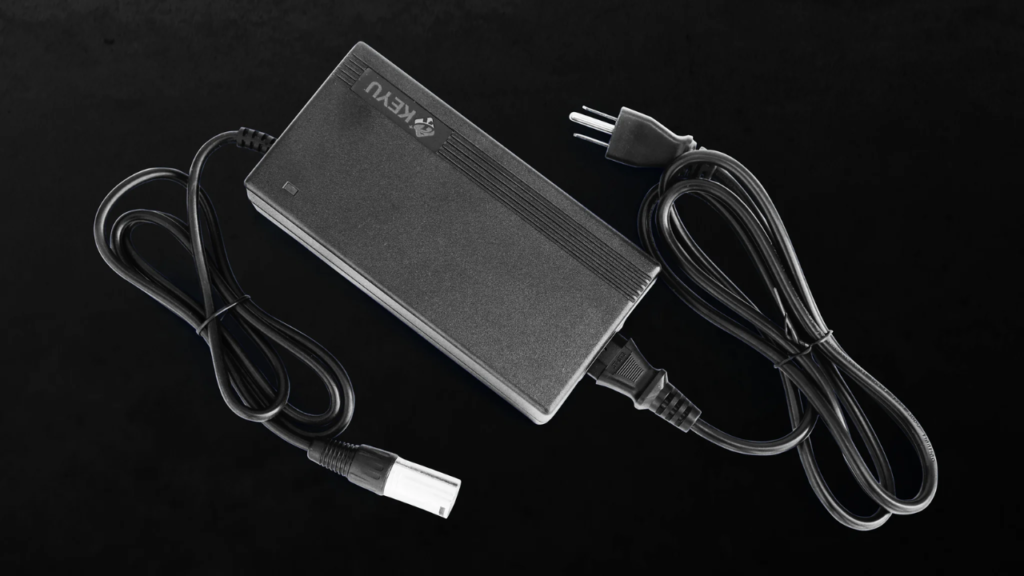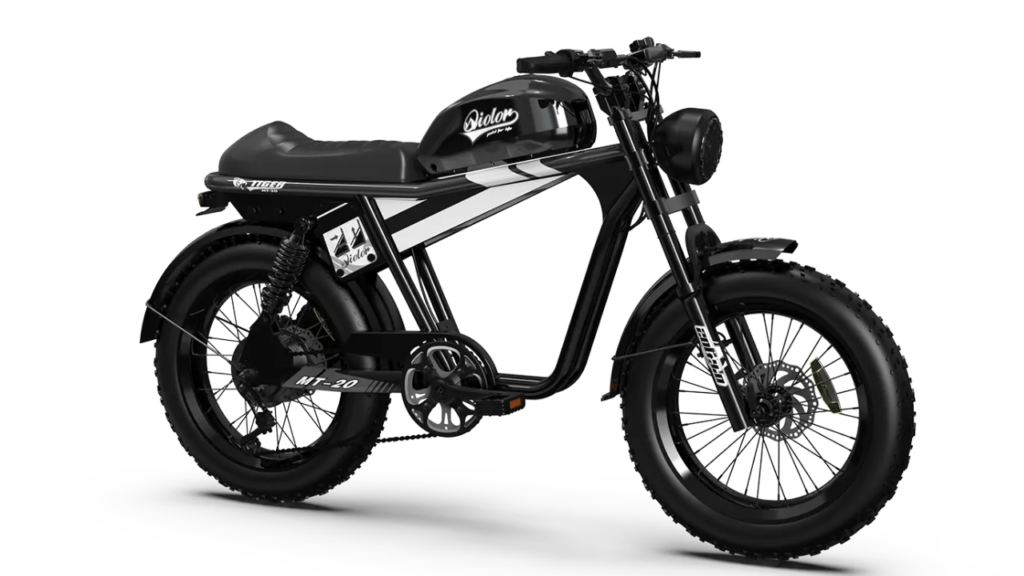Charging an electric bike is simple and a prerequisite for any good performance. Of necessity, one should ensure getting the right charger for the type of battery. Make sure to read any recommendations or guidelines issued by the manufacturer. This ensures security and efficiency in charging.
Next, you must attach it to the battery pack and plug it to an electric outlet. Then, you can easily monitor its charging indicator for you to know if it is already full or not. You must not overcharge the battery because this ruins a battery very easily. You can now ride for a long time because of these simple steps.
Understanding Battery Types for Electric Bikes
Electric bikes use different battery types each with unique Characteristics. The about green is the lithium-ion assault. It is lightweight and efficient making it ideal for effectiveness. Deliberate the assault case helps you hold and sustain its life.
Lithium-Ion Batteries
Lithium-ion batteries are preferred for electric bikes. They are light and come packed with enormous amounts of energy. Such batteries charge really quickly and have long lifespan. Though they cost a little more, excellent performance is worth the extra money for it.
Nickel-Cadmium Batteries
Nickel-cadmium (Ni-Cd) batteries are most recent generations of electric bikes incorporated decades ago design of batteries. They are thick and heavy but can offer a great backup power as they are capable of lasting long. Of course, a much more significant drawback is the toxic material from which nickel-cadmium batteries are made; if mishandled or not disposed of in a responsible manner, they become an environmental danger. These are rarely employed in today’s electric bikes.
Nickel-Metal Hydride Batteries
Nickel-metal hydride batteries are more ecological compared to Ni-Cd. They are lighter but contain less energy compared to lithium-ion. NiMH is more expensive compared to Ni-Cd but with a lower environment impact. Compared to the present electric bikes, they are relatively infrequent.
Selecting the Right Charger

This means selecting the right charger has everything to do with the general performance of your electric bike. You need to ensure that your charger matches your battery type so as not to cause damage. In most instances, the charger shipped with an electric bike is specific to the bike and that is what you must replace if it has become faulty. The next thing is voltage and amperage ratings. An incorrect charger may jeopardize the overall lifespan of the battery or make it overheat.
Preparing to Charge
Before you dive into the charging process, ensure a few things:
1. Verify Charge Status: Observe the battery light on the bicycle. Recharging is necessary when the battery level shows 20% or less.
2. Look for a Suitable Charger: Utilize the provided charger with the bicycle. A different charger may ruin the battery.
3. Gather Supplies: You’ll need:
- Charger
- Power outlet
- Space to store your bike (if necessary)
Steps to Charge Your Electric Bike
After this, we shall outline how to charge an electric bike in a number of easy steps.
Step 1: Disconnect the Battery
Many e-bikes let you take the battery off. If yours does let you, then starting here with disconnection from the bike is a great way to begin. It makes charging easier and safer.
“Always refer to the user manual when in doubt about removing the battery.”
Step 2: Find a Safe Charging Spot
Select an area that has good airflow and is not exposed to sunlight or dampness. A cool and dry place is ideal to keep batteries in their good condition.
Step 3: Plug in the Charger
Attach the charger to the battery pack. Verify that it is properly attached in both the battery and on the wall socket. Observe the display on the charger. Make sure that it will work according to its design.
Step 4: Monitor the Charging Process
Monitoring the charging cycle is encouraged. Most of the chargers have an LED light that indicates the status of charging and may involve a combination of different colors to mean charging, charged, or faulty battery.
- Red or Yellow: Charging in progress
- Green: Fully charged
Most lithium-ion batteries take between 3 to 8 hours to charge, depending on their size and the remaining capacity.
Step 5: Safely Disconnect
The first step after filling the battery with vitamins is to take out the power cord from the wall Socket. If you had taken it out of the bike, then gently put the battery back in the bike.
Note: Never overcharge. If the charger is removed once it is fully charged it will help increase the number of years that the battery lasts.
Solar Charging Solutions
Another good option to give new life to your electric bike is through solar charging. Special solar chargers change the sunlight into electricity and let you charge your bikes anywhere within the suns beam. They are portable and green. Although they are a bit slower than other chargers when compared, they save energy costs and good for a long trip.
Challenges and Solutions in Charging Electric Bikes
Smart charging technology is the future of electric bikes. These chargers automatically adjust to provide the correct amount of power. Such batteries do not allow overcharging which helps to maintain the health of the battery. Some smart chargers go a notch higher and get connected to applications, thereby enabling the user to monitor battery charge and health status on their phone.
Smart Charging Technologies
Smart charging technology is the future of electric bikes. These chargers automatically adjust to provide the correct amount of power. They prevent overcharging and keep the battery in good condition. Some smart chargers even connect to apps, allowing you to track charging progress and battery health from your phone.
Community and Online Resources
There are many communities and resources available for electric bike users. Online forums, local cycling groups, and apps provide helpful tips and advice. You can find solutions to common issues or recommendations for the best chargers. Many websites also offer detailed guides and reviews to help you maintain and upgrade your bike.
Future Trends in Electric Bike Charging
The outlook on the future of charging electric bikes is very positive. New technologies for batteries are being invented whereby charging time will reduce and the lifetime of the battery will be extended.
Systems of charge without plugging may become rampant, whereby riders will charge their electric bikes without plugging in any wires. There will be more of Solar-powered charging stations too, making it easier to charge the bikes in an eco-friendly manner.
Battery Care Tips

Maintaining your battery appropriately can increase its longevity. Here are steps that you can undertake:
- Keep it Charged: It is advisable to avoid complete discharge of your battery quite often. You should be aiming for a 20%-80% charge time.
- Store Properly: In case of long inactivity with the bike, it is recommended that one keeps the battery in a cool dry place. It is also better to retain it at half charge.
- Avoid extreme temperature: Do not store or charge the battery in very high or very low temperatures.
What to Do When My E-Bike Fails To Charge?
Be not concerned if after diligently taking all the steps your bicycle still fails to charge, such things happen. The following are frequent issues and their remedies:
- Faulty Charger: First, check if your charger is working. You can test it on another electric bike if available.
- Dirty Connections: Inspect the charging points. Make an effort to remove any contaminants that may hinder the connection.
- Lifespan of Batteries: Each battery has a shelf life. When yours is unable to retain a charge even after being fully charged it’s probably nearing the end of its life span.
Troubleshooting Issues when Charging the Device
Many excellent electric bicycles encounter charging issues. Below are methods of diagnosing and solving them:
1. Problems that occur frequently include battery failure to charge, overly prolonged charging periods, or inaccurate power level displays. These may result from faulty chargers or loose connections.
2. First, examine the charger and wires for damages. If the charger fails to function, it is possible to change the power source. Check that the battery is clean and is well connected to the charger. Sometimes, a battery reset can work.
3. It is preferable that a specialist be consulted if simple solutions do not correct the issue. Ongoing charging difficulties could suggest that there is a more severe battery issue that requires immediate assistance from a professional.
Environmental Impact of Electric Bike Charging
As one would put it, electric bikes are great for the environment but the charging process also has a certain impact. How you can make sure to be as environmentally friendly as possible:
These electric bikes reduce the use of fuel-burning vehicles, hence decreasing the carbon emissions in the world. These vehicles run by clean electricity with no direct pollution, thereby keeping the planet green.
You can actually charge your electric bike with solar energy or even wind power that is a great sustainable option. It would mean less dependence on fossil fuel and your ride completely more environmental friendly as well. Some charging stations are now offering renewable energy sources.
Electric bicycles induce cleaner transportation by reducing pollution and congestion in traffic. They use far less energy compared to cars, which instead promotes a sustainable future.
Final Thoughts on Charging Electric Bikes
Charging a bike is not complicated and has positively influenced performance and longevity. However, proper charging would ensure that your bike is always ready for you to need it, hence regular maintenance of the battery through consistent charging will help maximize its lifespan and efficiency.
To understanding how to charge, it is essential to be aware of the environment in which you charge your bike. Keeping the battery in a dry, temperature-controlled area can prevent potential damage. This attention to detail helps maintain the health of your bike and enhances your riding experience.
Ultimately, proper charging of your electric bike is the end step to owning an electric bike. It will allow you to get as much mileage out of your bike as possible, but it contributes as well to a greener mode of transport. In addition, embracing electric biking is not only convenient but also greener than any other transport mode in the interest of a healthier planet.
FAQ’s
1. How to charge an electric bike from your house?
Charge the electric bike: From home, you’ll first plug in the charger into the charging port or take out the battery if it is removable. The charger then connects to power outlet and must be well connected with the light of charging on.
2. How do I tell my E-bike is charging?
Most of the e-bikes have an indicator light either on the battery or the battery charger. While charging, the light turns red or orange. After completing the charge cycle, the light usually turns green or goes off depending on the design.
3. Is it all right to charge an electric bicycle overnight?
Yes, you can charge your e-bike overnight typically without risks when your charger has an automatic shut-off feature. However, this can sometimes cause overcharging and therefore should not be practiced very often.
4. Can I charge my e-bike daily?
Of course, you can charge your e-bike on a daily basis, especially if you frequently go for a ride. This will not only grant you access to the system daily but also keep your battery healthy in the long run. Drain your battery too frequently, and it may end up having destroyed your battery.
Meta Description
“Learn how to safely charge your electric bike. Easy steps for maintaining health in the healthiness of your battery and guaranteeing an extended lifespan. Keep your bike ready for every ride!”
Read More Here: The Essential Guide to Electric Bike Accessories
